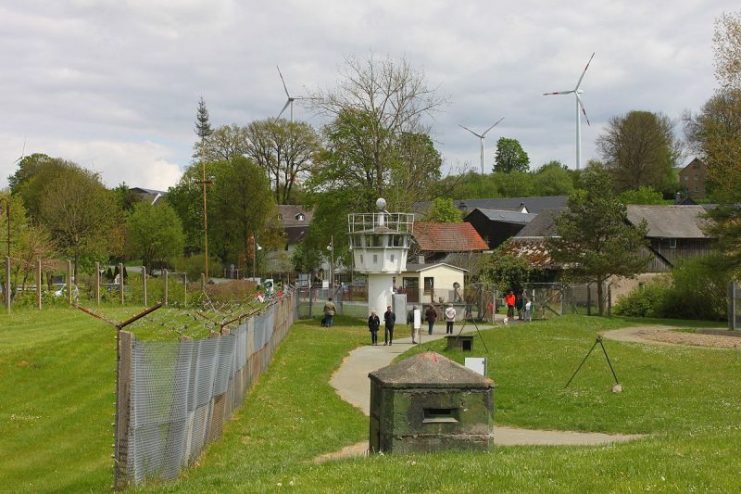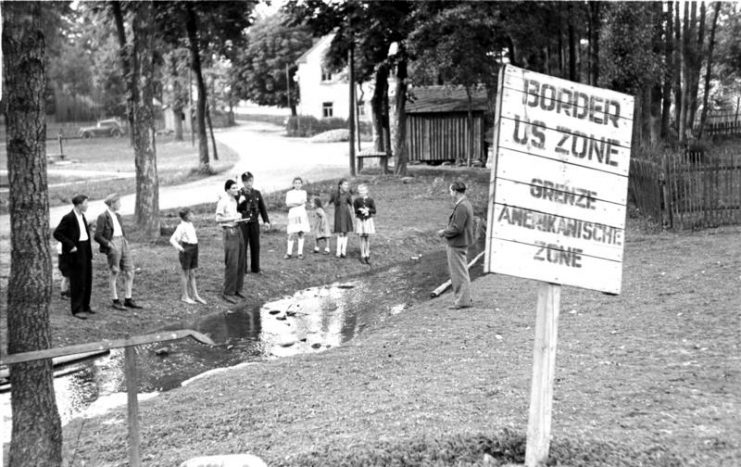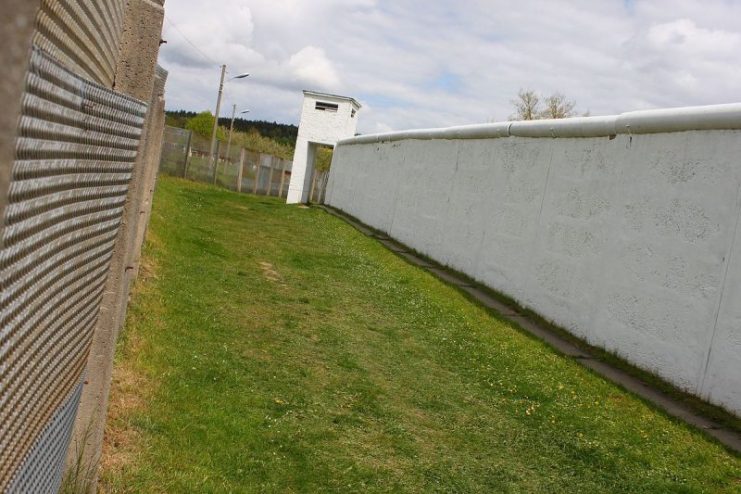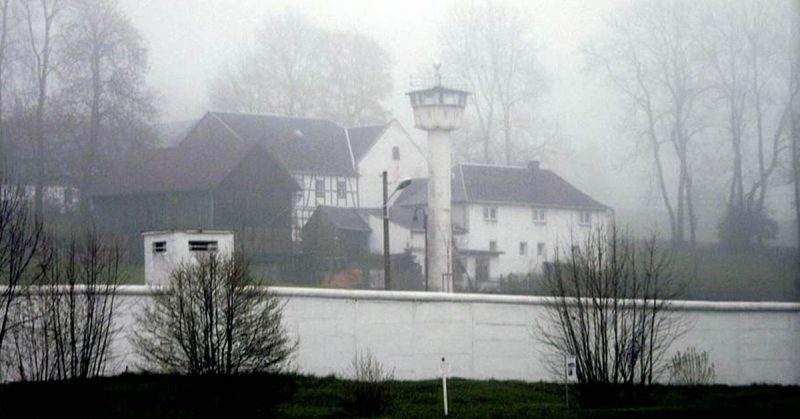Thirty years after the Berlin Wall was taken down, there is still one town in Germany that is split between east and west.
The town of Mödlareuth only has fifteen houses, but it has two mayors, two dialing codes and two different styles of speech.
Since 1810, the town has existed on the border of two German states, Bavaria and Thuringia but that was never a problem to the residents until the end of WWII.
With the carving up of Germany between the Soviet Union and the USA, Mödlareuth was split along the line between the two states. The Soviets occupied the eastern part of the town while the Americans took charge of the western portion.
After the split, a wall was erected to divide the two sides with guard towers, landmines, and machine guns installed. Mödlareuth became known as ‘Little Berlin.’

There is only a small part of the wall left standing, but the town is still divided.
Jason Johnson is the author of “Divided Village: The Cold War in the German Borderlands.” He says the town is an “oddity” in modern-day Germany.
https://youtu.be/lONOJ4eKVzg
According to Johnson, the town still has two mayors, two postal codes, and two area codes. To speak with someone on the other side of the street, people must make a long-distance phone call. There are even different schools for the children on each side of town.
A casual tourist to Modlareuth might notice the difference in greetings used by the townsfolk on each half of the divide. On the Bavarian side, they are welcomed with the traditional Bavarian greeting of “Grüss Gott” while on the other side they use the German greeting of “Guten Tag.”

The residents were asked at one point if they would like to unite the two sides of the village and they unanimously decided not to do so.
Ingolf Hermann works in the local museum. He says that there are signs the community is coming together. Residents now gather together for events at the community center which is located on the Thuringian side of the border. This year, instead of setting up two maypoles for May Day, they only set up one for both to use.
The Soviets occupied the entire town but withdrew to the Thuringian side and ceded the Bavarian section to the US. The wall was built in 1952 to prevent people sneaking across the border.
In 1961, five years after the Berlin Wall was erected, Mödlareuth had their own concrete wall. However, life in Mödlareuth was not like life in divided Berlin.

For one thing, most Berliners in the West section did not know people on the East side. Wherever people lived, it was still a major city. In Mödlareuth, everyone knew everyone else on both sides of the wall. One man was even separated from his brother by it.
Dividing such a small town required a different approach by the Soviets. They sent five Stasi spies there, but the residents immediately knew they were not locals and avoided them, preventing them from learning anything.
George Bush, when he was Vice President of the US under President Ronald Reagan, visited Modlareuth. He told those gathered on the western side of the wall that it “was an even greater obscenity” than the more famous Berlin one.
The Berlin Wall began to come down on November 9, 1989. On December 5, villagers on the eastern side asked their mayor to open the wall. Two days later engineers from the border guard began taking it down. By December 9, villagers were free to pass between the two sides.
Today, only part of the wall survives in the tiny town, serving as an open-air museum along with two of the guard towers. Still, the border remains as it has for 65 years, keeping the two sides of the town separate.
